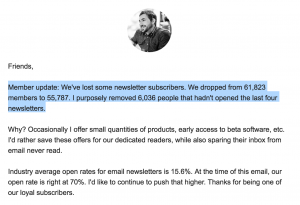In October we launched weekly internal scorecarding, a constructive by-product of that is it also identifies our business bug rate. Bug rate is the rate at which normal things break.
In a software company, these are easily fixed but early identification is key. The upside of it being software is you can often identify the breakage faster.
With our team, I’ve encouraged them to not fret about it.
Breaking things is a way of life. We just need to fix it fast, learn from it and get on with it.
The danger is in not doing so allows things to build up, rather than deal with the slight distraction by fixing it and return to what’s key.
A business is built on hundreds of these little bricks, ways of doing things, and processes. If you let too many crumble or deteriorate suddenly you have a wall falling down.
When I was a kid, I was playing with Legos with a friend. He wanted to have a competition to see who could build a house the fastest. So off we went, he built his walls straight up, Lego brick on top of Lego brick whereas I built mine interlocking to build a strong wall.
He of course won – but I said, that’s not something that’s going to last. It’s flimsy. That analogy rings true in building your company, you need to build it consistently, build it strong BUT build it rapidly when you need to.
In doing so, things will break, that’s ok, fix it fast, learn and get on with it.
The Counter Argument: Not worrying about it
Founders often struggle with the acknowledgement that something is broken but the fact that it’s working will do for now. It’s not a top 3 priority.
You know this is appropriate, when it’s not a top 3, it’s not (yet) impacting the survival of your business. At certain stages the life of a CEO is like a game of whack-a-mole at the arcade. Whatever big problem pops up you have to deal with that.
If you’re a team member and you see that this is a reality on a specific issue and you think that it’s more important than your CEO or leader is giving it, take the extra effort to either solve it yourself, or figure out a solution. They need your help to clear the 4,5,6.
If you’re a CEO, remember to delegate as much of this as you can, it’s your trusted team which will carry the momentum.
The Excellence Phase: Doing it right
In a time of rest, or calm, that’s the time to go back and re-optimize all processes. To find ways of being more efficient, this is when things that haven’t already been solved can be solved in a more scalable phase.
The problem here is, trying to solve too far ahead. In a startup solve for the problems you have today, as you don’t know if you’ll be around tomorrow. Anticipating problems is good but the opportunity cost of spending time solving a problem you don’t yet have vs ones you do is too expensive.
If you haven’t read Zero to One, give it a read. Your benchmark for improvement is 10 times. Whether that’s throughput, cost savings, each improvement you want to aim for at least 10 times improvement.
—-
Then rinse/repeat. This is the cycle of building, fix it fast, let it break, do it right.
